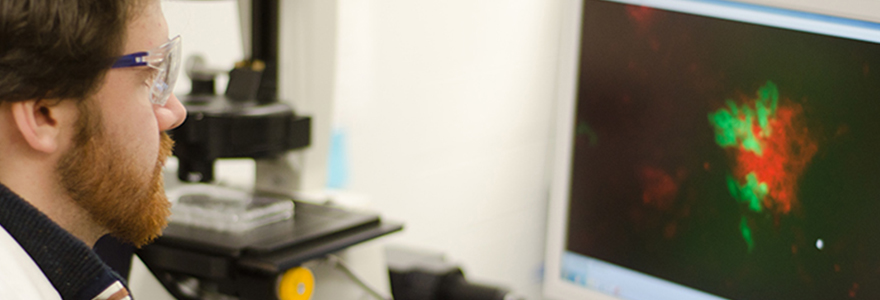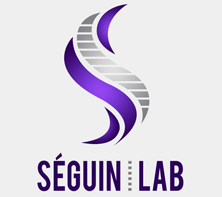Research
Contact Us
Department of Physiology and Pharmacology
Western University
London, Ontario
Dental Sciences Building,
Rm. 0035A
t. 519.661.2111 Ext. 82977
f. 519.850-2459
cheryle.seguin@schulich.uwo.ca
Research

In the Séguin Lab, our research program centers on understanding the pathways that regulate the fate and function of cells, with a particular emphasis on the intervertebral disc and spine pathologies. This research is particularly relevant given that back pain is the most frequently reported musculoskeletal problem in Canada, and the second most common cause for visits to physicians in North America.
The lack of effective treatment for this widespread clinical problem is related to our limited understanding of the specific cell types and pathways regulating intervertebral disc development and disease.
To address this, Dr. Séguin's research program involves a number of interrelated projects that use novel genetic mouse strains, and in vivo and ex vivo model systems.
- Fate mapping intervertebral disc cells. The first studies from the Séguin lab addressed a long-standing debate by interrogating the developmental origins intervertebral disc cells. Using a novel notochord Cre mouse, we demonstrated that all cells in the nucleus pulposus are of notochordal origin. This work enabled the development of techniques for notochord cell isolation, culture and phenotypic characterization.
- Notochord-specific gene knockout models. We are examining candidate factors in the intervertebral disc by targeted gene deletion. Our recent studies reported notochord-specific CCN2 knockout mice, and demonstrated that expression of this matricellular protein by notochord-derived cells regulates disc development and age-associated disc degeneration.
- Models to examine mechanobiology in joint tissues. We have integrated expertise in spine biology into collaborative research, including the use of mouse models to study mechanobiology in joint tissues. We demonstrated a cell autonomous response of intervertebral disc cells to acute vibration, and ongoing research is examining the response to chronic mechanical loading.
Our Goals
- To understand how the notochord directs embryonic intervertebral disc formation
- To establish the phenotype of distinct disc cell types and understand how cell function is altered with age and mechanical load
- To determine if processes associated with disc formation can be re-initiated for tissue repair or to treat disc degeneration
Dr. Séguin's lab offers a variety of research opportunities.
- Delineating the role of the notochord during intervertebral disc development
- Elucidating the role of matricellular proteins in intervertebral disc development, health and disease.
- A novel mouse model of Diffuse Idiopathic Skeletal Hyperostosis (DISH)
- Understanding the response of intervertebral disc cells to mechanical loading
- Pathways that regulate cell fate specification









